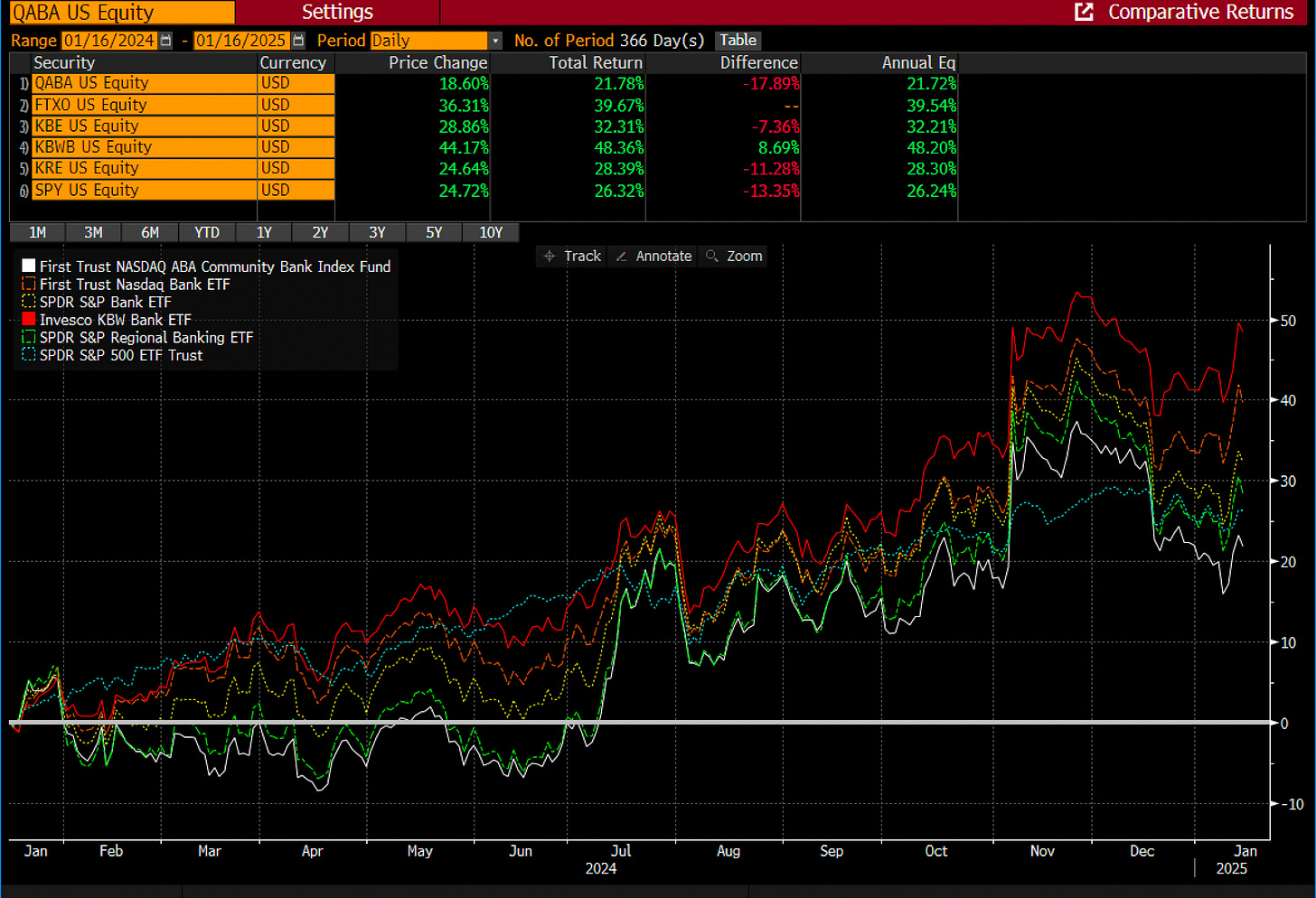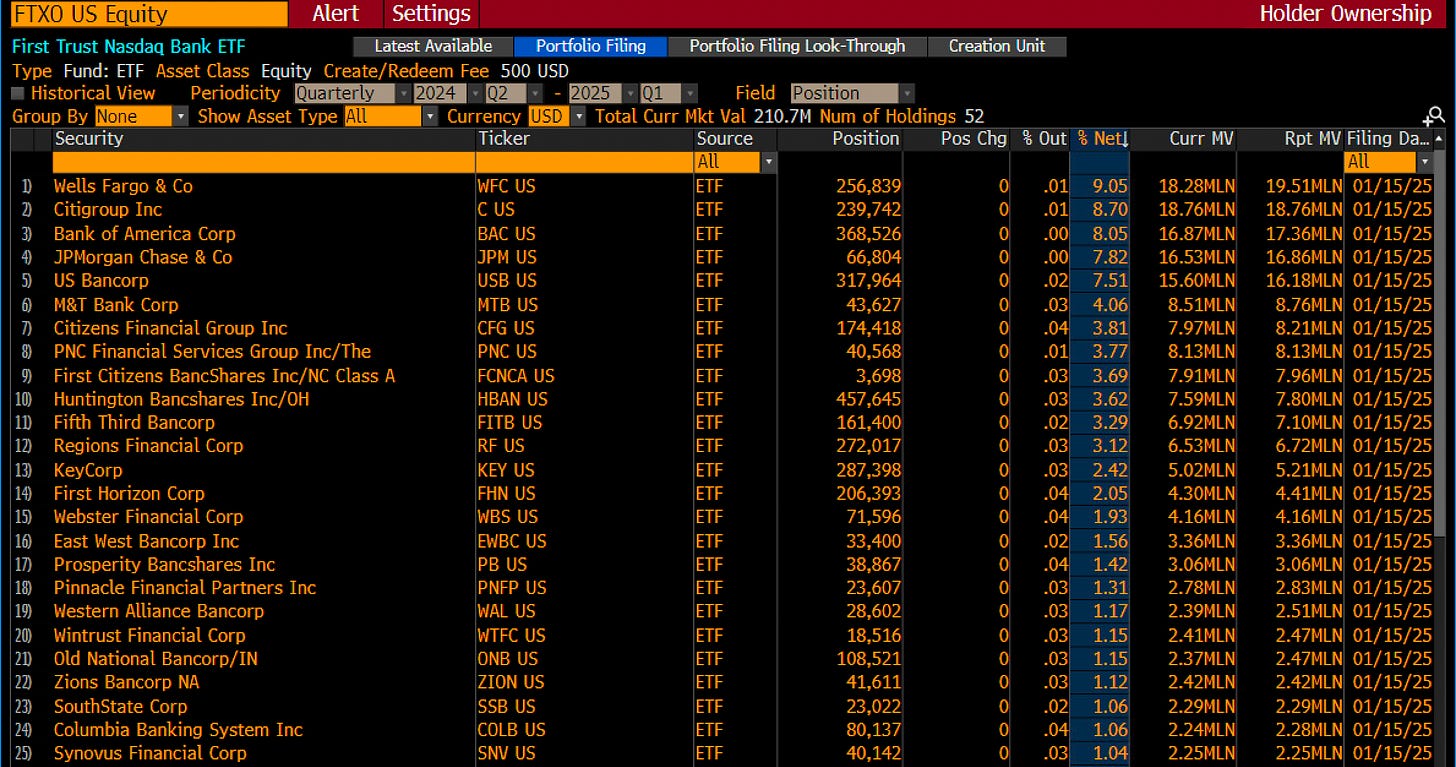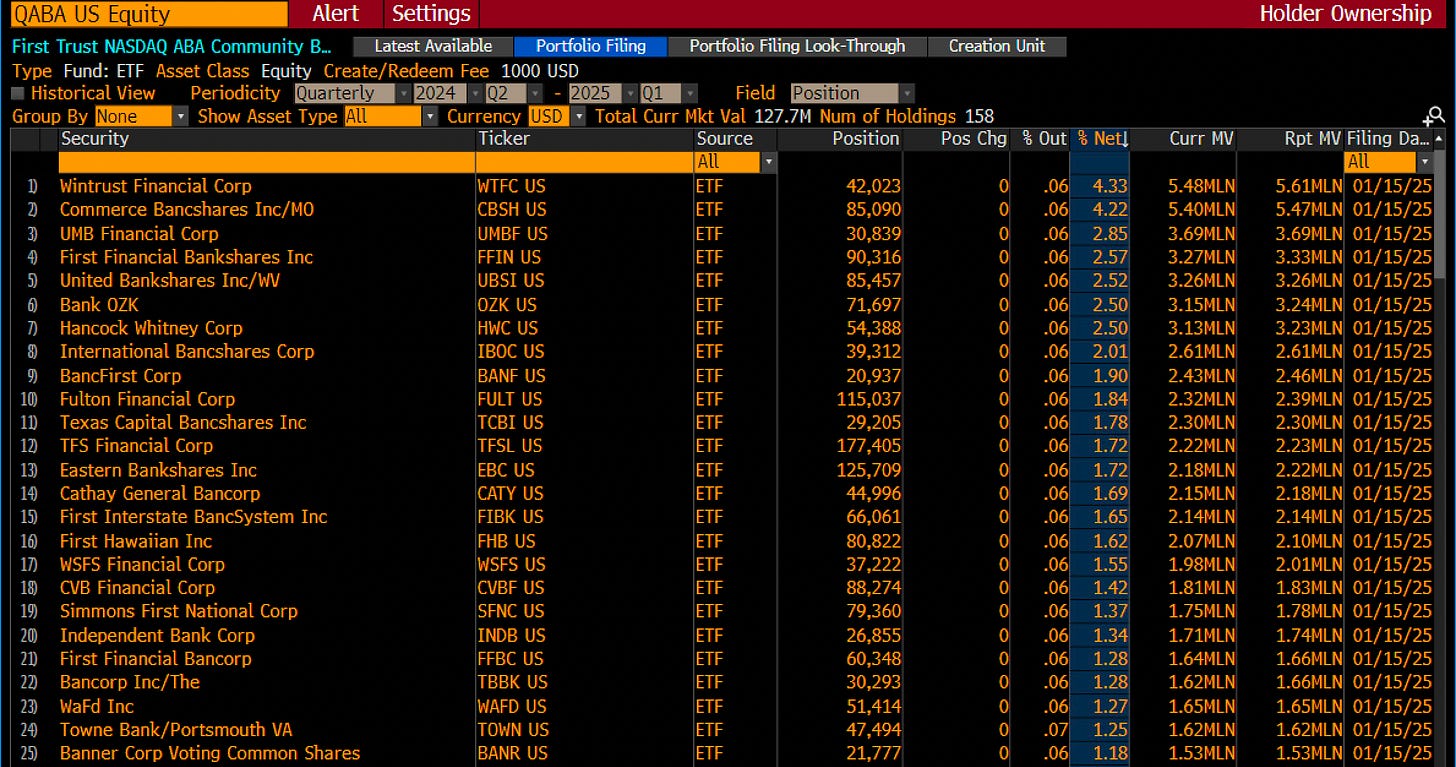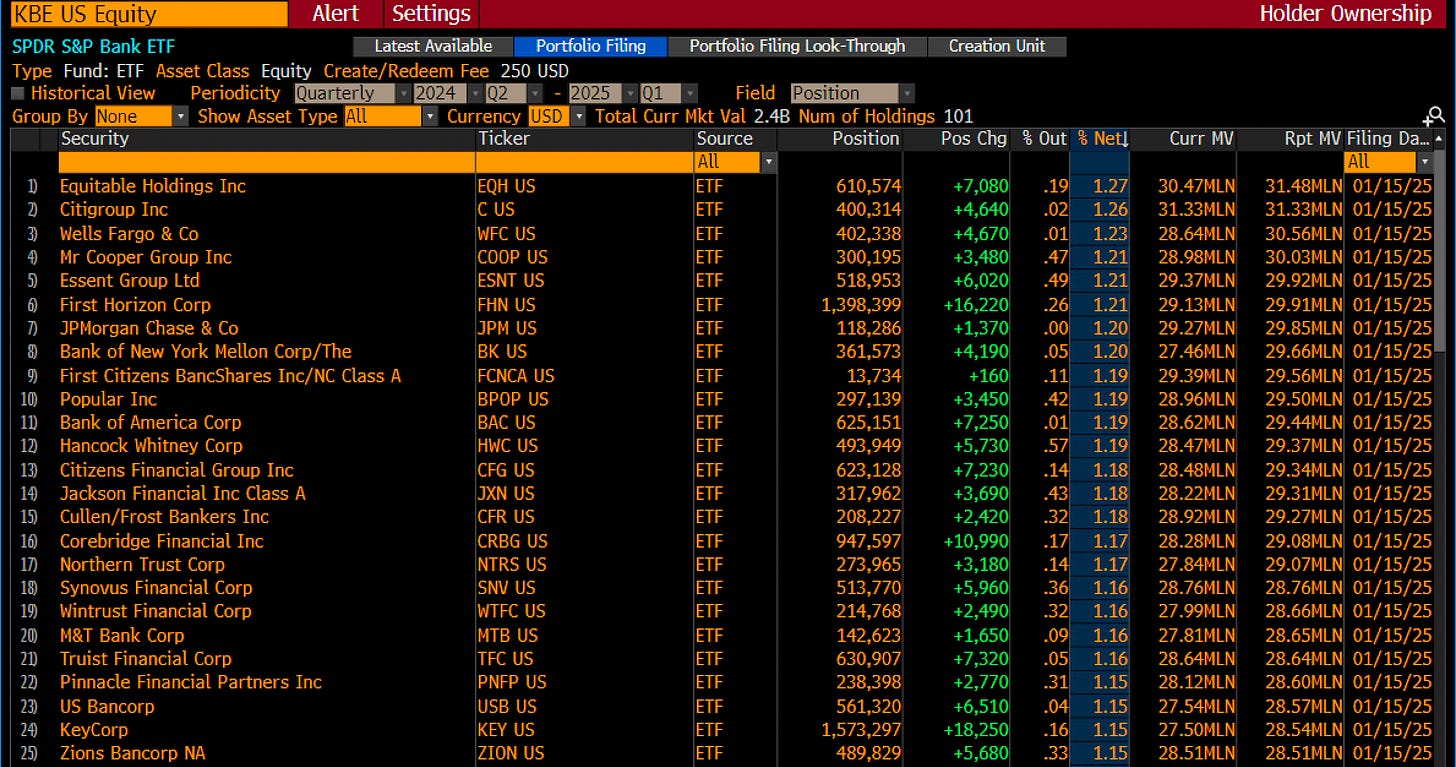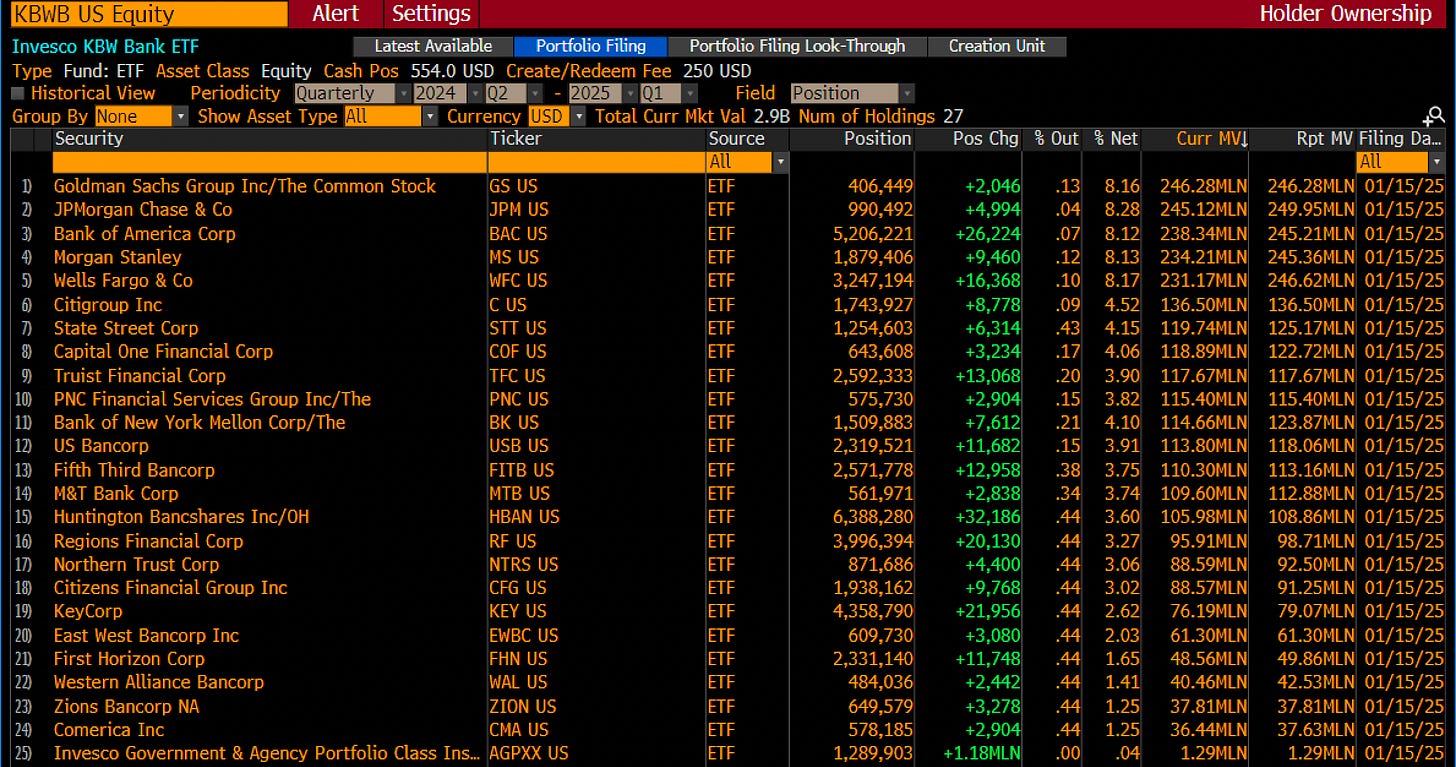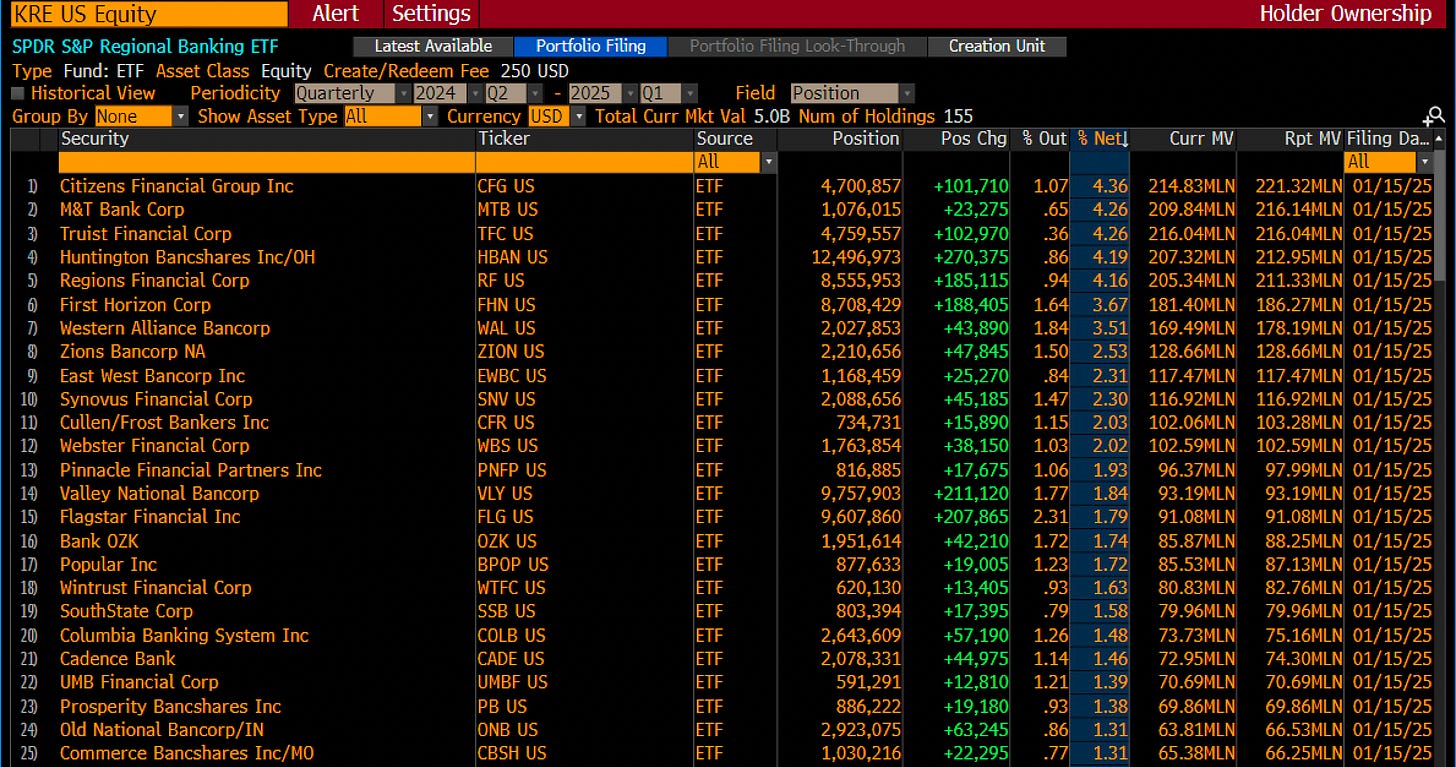I spend some of my time looking at bank stocks, and after all why not? It is an industry that I’ve earned some wisdom in and to be honest, rarely miss on.
Why shouldn’t you invest in banks?
Banks are complicated to outsiders.
Banks are super levered.
Banks have a whole host of wonky metrics that confuse people.
Banks are cyclical.
Banks can fail when losing confidence.
Banks as a sector are slower growers.
And well the list can go on and on.
But for me (and some friends who are even better than me) banks are profitable.
And if you’re a premium sub here, you’ve had some winners.
Citibank: Citibank Long Call
Western Alliance: Western Alliance Long Call
Big Banks: Big Banks Long Call
And while I’m the conduit for the ideas, the power of this blog is that you get 15 years of “wisdom” (earned knowledge through countless non-fatal failures) and more importantly through me, access to some of the better minds in bank investing who I engage with, talk with, and learn from constantly.
There’s my case for upgrading and supporting the blog. The growth here has been above my wildest dreams and for that I’m thankful for all of you.
But onto the topic of discussion for today … you’re looking at getting passive exposure to the bank space.
So You Want to Buy a Bank ETF?
The reason why you may be thinking this is because banks have quietly outperformed the S&P 500 over the past year. If you’re not paying attention, you’re missing out. Here’s why the sector is heating up, and a quick run-down of the main bank ETFs out there.
The Case for Banks Right Now
Banks Are Beating the Market
Over the last year, banks have delivered returns above the broader market. While tech grabs the headlines, financials are quietly winning.Fundamentals Are Strong
Earnings are growing, balance sheets are solid, and the fundamentals are pointing to a sector ready to thrive.The Yield Curve is Smoothing Out
With the yield curve steepening, banks are poised to make more money from lending—good news for profits.De-Regulation Momentum
Trump is back in the Oval Office, and his administration is making moves to roll back regulations. More freedom for banks means more profit potential.Merger Mania
De-regulation also means a green light for more mergers and acquisitions. Consolidation can unlock value, and the biggest players will benefit.The Treasury’s Stance on Capital
Incoming Treasury Secretary Bessent has made it clear: U.S. banks are overcapitalized. With a push for lower Basel III capital requirements, banks could soon deploy more cash into dividends, buybacks, and lending.A Humming Economy
The economy is still growing, loan demand is picking up, and fears around credit losses remain subdued. This is the perfect backdrop for banks to thrive.
Or the long form version here:
For ETFs Where Do You Even Start?
Should you buy small banks or big banks? Regional banks or global powerhouses? Picking the winners is no small task, which is why many investors turn to ETFs as an easy way to get exposure to the sector.
Here’s a breakdown of popular banking ETFs to help you make an informed decision:
FTXO (First Trust Nasdaq Bank ETF)
Note: small is fine, but only if it’s active and the strategy has some alpha. This one is small with no major “alpha” in my opinion.
Quick Stats:
Expense Ratio: 0.60%
While higher than some broad-market ETFs, this cost is typical for niche, sector-focused ETFs. The question is: does the performance justify the price?Assets Under Management: $215 million
A respectable size for a sector ETF, indicating decent liquidity and investor confidence. Too small for me.Index Tracked: Nasdaq Bank Index
This index focuses on U.S. bank stocks, with a mix of large, mid, and small-cap banks, leaning toward those with higher volatility and growth potential.
What Makes FTXO Unique?
Factor-Based Weighting
Unlike traditional market-cap-weighted ETFs, FTXO uses a modified factor-based approach, emphasizing banks with strong growth, momentum, and value characteristics. This could offer a more dynamic exposure compared to purely passive bank ETFs.Small and Mid-Cap Tilt
While it includes major players, FTXO gives significant weight to smaller, regional banks that often outperform in favorable economic and regulatory environments.Volatility Advantage
Its focus on high-volatility banks might lead to outsized returns in a strong market but comes with higher risk. It’s suited for investors who can stomach some swings.
Top Holdings:
QABA (First Trust NASDAQ ABA Community Bank Index ETF)
Note: same here that small is fine, but only if it’s active and the strategy has some alpha. This one is small with no major “alpha” in my opinion.
Quick Stats:
Expense Ratio: 0.60%
Similar to other niche ETFs, the cost is higher than broad-market ETFs, but it aligns with sector-focused funds offering targeted exposure.Assets Under Management: $129 million
While smaller compared to some larger ETFs, this size reflects a specialized product catering to a specific market segment.Index Tracked: ABA Community Bank Index
The index focuses on small and mid-sized U.S. community banks, excluding the largest national players, to emphasize grassroots financial institutions.
What Makes QABA Unique?
Focus on Community Banks
QABA excludes megabanks like JPMorgan Chase and Bank of America, instead spotlighting community banks that thrive on local lending and regional growth.Potential for M&A Upside
Community banks are often acquisition targets in a consolidating industry. QABA offers exposure to these potential winners.Local Economic Drivers
The ETF’s focus on smaller banks ties its performance to the health of regional economies, which can outperform in periods of localized growth.
Top Holdings:
KBE (SPDR S&P Bank ETF)
Quick Stats:
Expense Ratio: 0.35%
With a low expense ratio, KBE is cost-effective compared to many other sector-focused ETFs, making it appealing for long-term investors.Assets Under Management: $2.5 billion
KBE is one of the largest bank-focused ETFs, offering excellent liquidity and strong investor confidence.Index Tracked: S&P Banks Select Industry Index
This index provides broad exposure to U.S. banks, including a mix of small, mid, and large-cap companies, ensuring you capture the full spectrum of the sector. But it does hold some non-banks so it’s not pure.
What Makes KBE Unique?
Equal-Weighted Approach
KBE equally weights its holdings, giving smaller banks the same influence as larger ones. This contrasts with market-cap-weighted ETFs and can provide better diversification and upside potential for smaller banks.Comprehensive Exposure
KBE covers the entire banking sector, from regional banks to large national institutions, making it a great choice for investors seeking broad exposure. But again it’s not all banks.Stability and Liquidity
With $2.5 billion in assets, KBE offers high liquidity, ensuring tighter bid-ask spreads and ease of trading for both retail and institutional investors.
Top Holdings:
KBWB (Invesco KBW Bank ETF)
Quick Stats:
Expense Ratio: 0.35%
KBWB offers low-cost access to top-tier banks, making it an affordable choice for gaining exposure to the banking sector.Assets Under Management: $3 billion
With substantial AUM, KBWB provides excellent liquidity, ensuring ease of trading and tight bid-ask spreads.Index Tracked: KBW Nasdaq Bank Index
The index focuses on U.S. banking giants, capturing the largest and most influential players in the sector.
What Makes KBWB Unique?
Focus on Large-Cap Banks
KBWB primarily holds the biggest names in U.S. banking, such as JPMorgan Chase, Bank of America, and Citigroup, giving you concentrated exposure to industry leaders.Top-Heavy Weighting
Unlike equal-weighted ETFs, KBWB uses a modified market-cap weighting, emphasizing larger banks. This structure allows it to capitalize on the strength and stability of banking giants.Highly Liquid
With $3 billion in assets, KBWB ensures a smooth trading experience with minimal friction for both retail and institutional investors
Top Holdings:
KRE (SPDR S&P Regional Banking ETF)
Quick Stats:
Expense Ratio: 0.35%
KRE offers low-cost exposure, making it an attractive choice for investors looking for affordability in a sector-focused ETF.Assets Under Management: $5.1 billion
With over $5 billion in AUM, KRE is one of the most popular regional banking ETFs, ensuring excellent liquidity and widespread investor confidence.Index Tracked: S&P Regional Bank Index
The index focuses exclusively on U.S. regional banks, providing targeted exposure to smaller and mid-sized institutions.
What Makes KRE Unique?
Exclusive Focus on Regional Banks
KRE avoids the megabanks, concentrating solely on regional banks that benefit from local economic growth and smaller-scale lending.Equal-Weighted Strategy
Unlike market-cap-weighted ETFs, KRE assigns equal weight to its holdings, ensuring diversification and giving smaller banks the same influence as larger ones.Potential for M&A Growth
Regional banks are often acquisition targets in a consolidating industry, positioning KRE to capitalize on potential M&A-driven value creation.
Top Holdings:
The Verdict?
It really comes down to what you’re trying to accomplish. The FirstTrust ones are too small for me.
My bias is towards the bigger banks, so I lean towards KBWB.
But full disclosure I’m more active in my management. For that I use my Relative Growth Score and lean towards a portfolio of banks I think should perform well regardless of rates, the economy, or future changes to the world.
Thoughts are there. Give it a read.
Hit me up, happy investing, and have a great weekend.
More to come,
Victaurs




